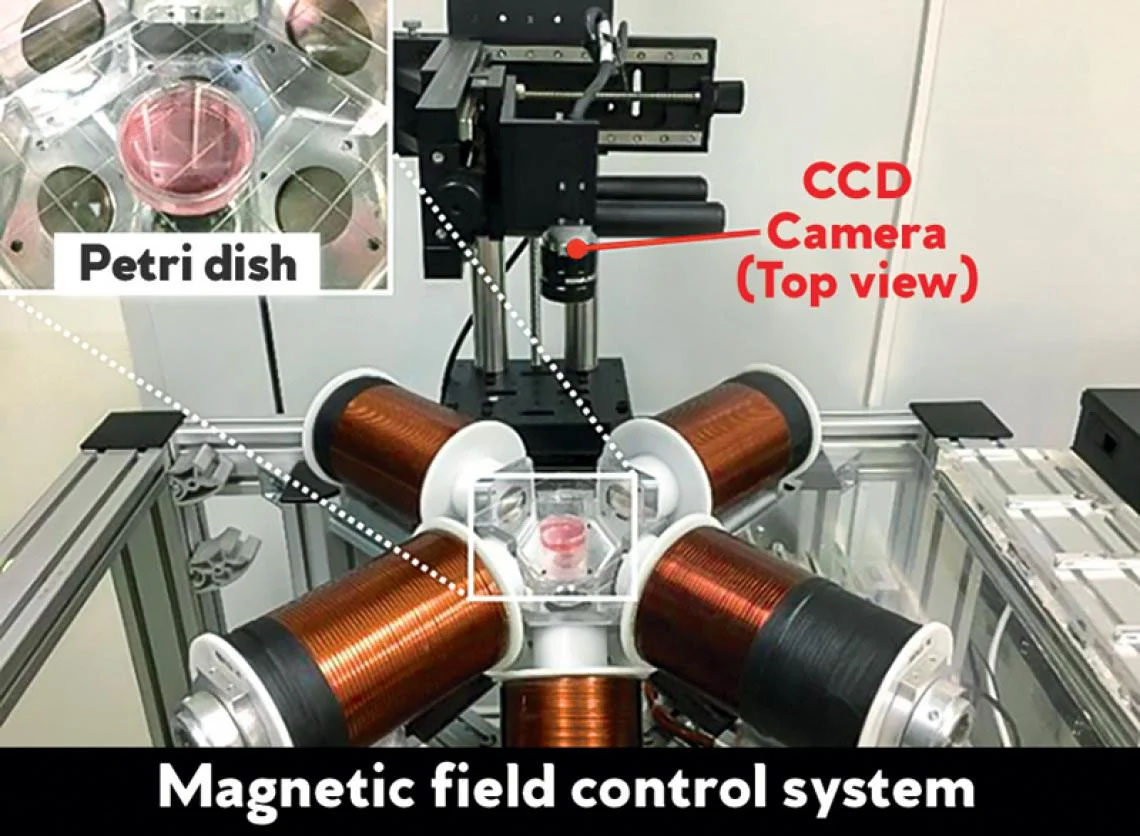| Feb 28, 2024 |
Brain repairs with nanorobots
(Nanowerk News) Researchers have found that nerve cells, carried by magnetically powered nanorobots, can be guided towards specific sites in brain tissue to then establish structural and functional connections with the nerve cells of that tissue. While not yet realised in living organisms, the researchers believe their nanorobotic system could potentially be used in patients to treat nerve-related degenerative diseases and injuries.
|
|
They describe their findings in the journal Advanced Materials ("A Neurospheroid-Based Microrobot for Targeted Neural Connections in a Hippocampal Slice").
|
|
In the study, a magnetic neurospheroid (Mag-Neurobot), which is made up of magnetic nanorobots carrying live nerve cells (neurons), was introduced into a slice of brain tissue and then magnetically guided to a precise location within that tissue using an external magnetic field.
|
|
Once in place, the manoeuvred neurons were able to establish a direct connection with the targeted brain cells by connecting to their synapses, the area at which neurons connect and communicate with each other and with other cells.“
|
 |
| The magnetic control system surrounding a tissue slice in the central petri dish precisely controls the Mag-Neurobot’s location. (Image: Jong-Cheol Rah, Hongsoo Choi, et al. Advanced Materials)
|
|
"Our work demonstrates the precise delivery of healthy and functional neurons to a target tissue,” says Hongsoo Choi, a corresponding author of the study. “This is exactly what is required to achieve the reconstruction of damaged brain circuits.”
|
|
Using microscopy analysis and through the recording of electrical signals from the Mag-Neurobot connected with brain tissue, the researchers confirmed the magnetically delivered neurons were functionally connected to the targeted brain cells.
|
|
“We found the intervention of the Mag-Neurobot and the cells it delivered did not alter the normal function of the tissue they were added into,” says Jong-Cheol Rah, another corresponding author of the study. “This is important for any safe use of the technology in patients.”
|
|
The researchers believe there are other clinical and research applications beyond the direct repair or regeneration of brain circuits. Potential uses include sending regenerative stem cells to different organs, like the heart, and delivering drugs to specific tissues to test their effectiveness or potential side effects.
|
|
The team plans to conduct additional studies to determine if the neurons delivered by the Mag-Neurobot can remain healthy for the extended period of time needed for structural and functional tissue repair.
|
|
“We have a long road ahead of us before Mag-Neurobots can be used in patients, but we have taken the important preliminary steps,” concludes Choi.
|

